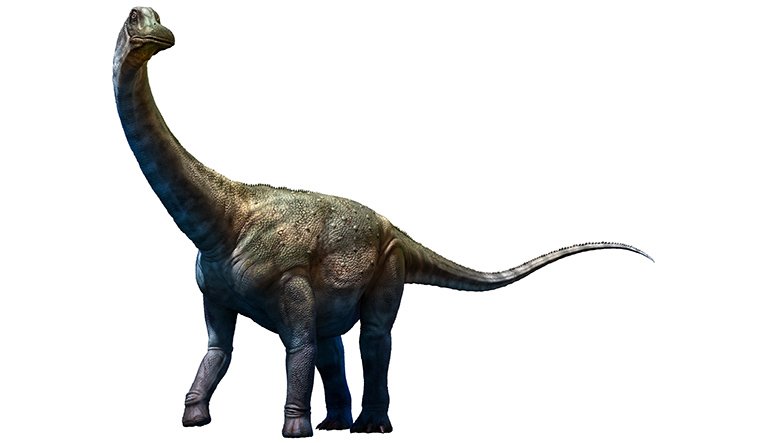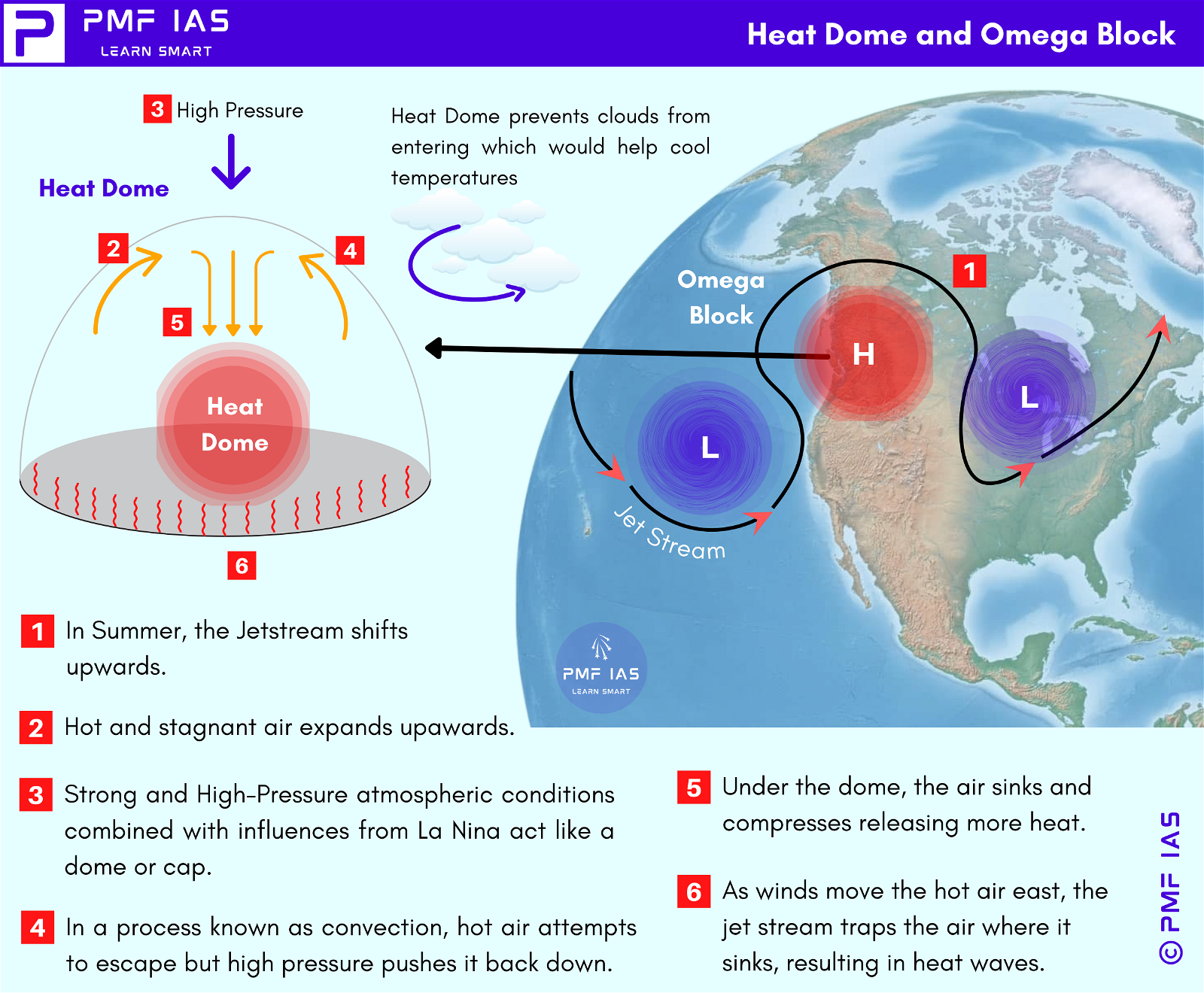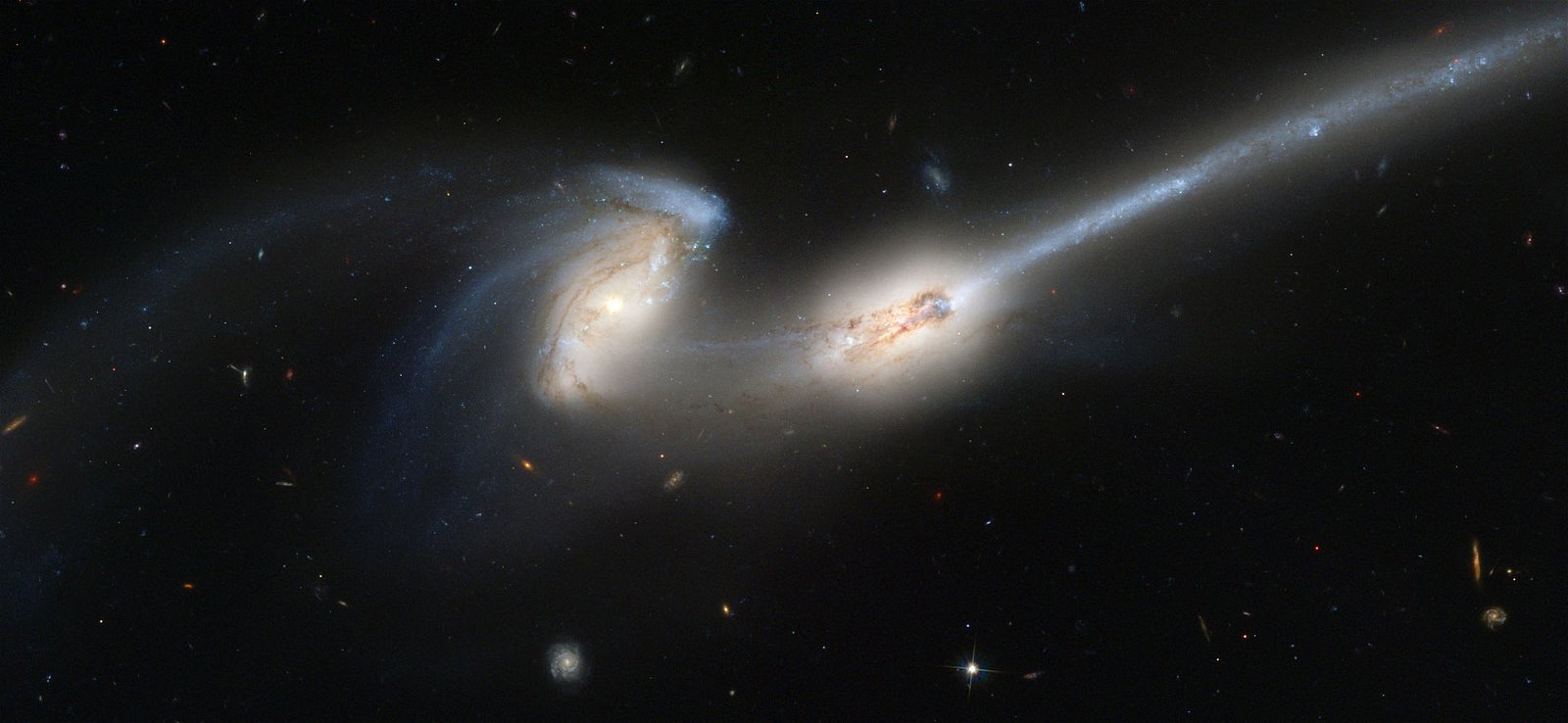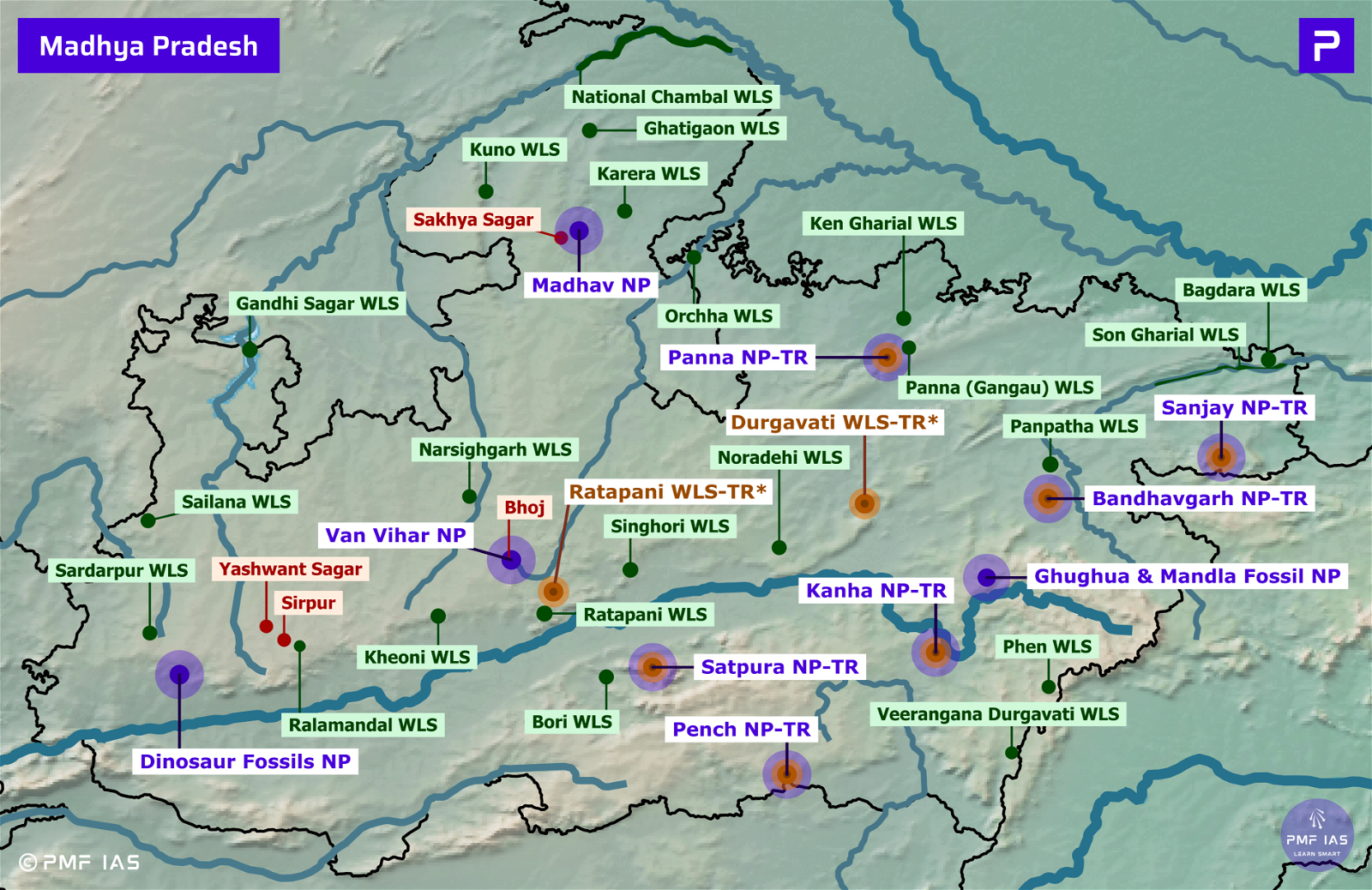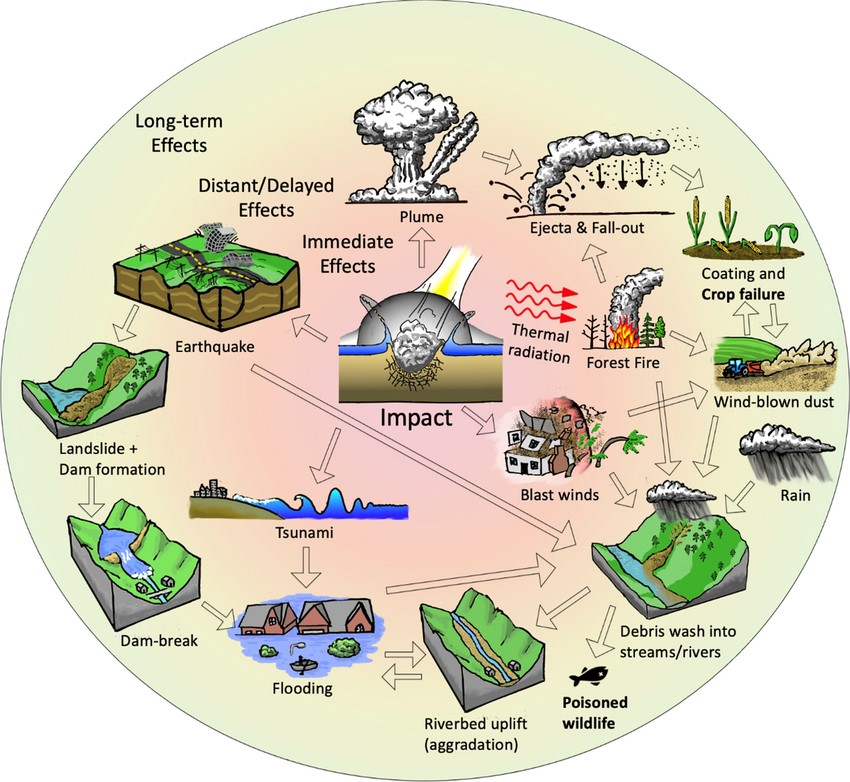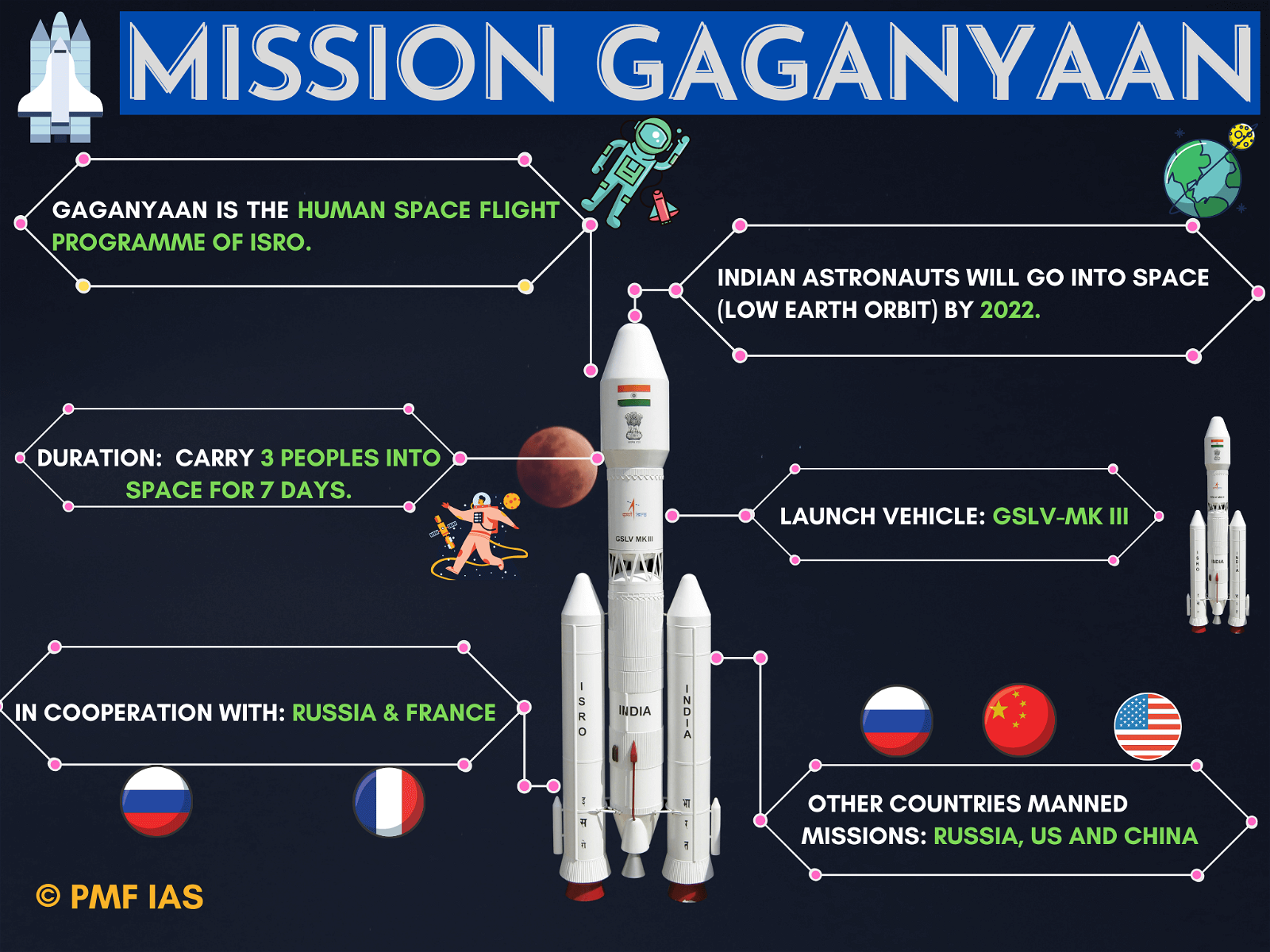
Current Affairs September 14, 2023: National Education Policy 2020, NeVA, Air Quality Index (AQI), Pradhan Mantri Ujjwala Yojana (PMUY)
Subscribers of "Current Affairs" course can Download Daily Current Affairs in PDF/DOC
Subscribe to Never Miss an Important Update! Assured Discounts on New Products!
Must Join PMF IAS Telegram Channel & PMF IAS History Telegram Channel
{GS1 – A&C – Culture – 2023/09/14} Megalithic Dolmen Site
- Context (TH I HT): Unique terracotta figurines in different states of preservation have been found in recent archaeological explorations conducted in the megalithic dolmen site at Mudu Konaje, near Moodbidri, in Dakshina Kannada.

- Megalithic culture is known for its different types of burials and use of iron in India.
- A dolmen is a megalithic tomb consisting of two or more upright stones supporting a large flat horizontal capstone.
- Dolmens are found all over the world, but they are particularly common in Europe and Asia.
Key Findings in the Mudu Konaje Site
- Eight terracotta figurines were found at the Mudu Konaje megalithic dolmen site in Karnataka, India.
- The figurines were dated to 800-700 BC.
- The figurines included two cow bovines, one mother goddess, two peacocks, a horse, the hand of a mother goddess, and an unknown object.
Significance of the Findings
- The cow bovines found in the dolmens help to determine the chronology of the dolmens.
- The terracotta figurines suggest that the megalithic people had a sophisticated religious belief system and that they were involved in long-distance trade.
- The findings also suggest that there were cultural connections between the megalithic people of India and other parts of the world.
{GS2 – Education – 2023/09/14} National Education Policy 2020
- Context (TH): The West Bengal Education Department has announced the adoption of the State Education Policy (SEP).
- It continues the state’s 5+4+2+2 school system.
Background of National Education Policy (NEP)
- The National Policy Education (NPE) was first formulated in 1968, based on the recommendations of the Kothari Commission.
- NPE 1986 aimed to:
- Provide education for everyone
- Boost primary education
- Create open universities
- Plan of Action (POA) 1992 focused on early childhood care and universal elementary education.
- The Committee on New Education Policy (NEP) chaired by Subramanian was constituted in 2015.
- It submitted its report in 2016.
- The Committee for Draft National Education Policy chaired by Dr. Kasturirangan submitted its report in 2019.
National Education Policy (NEP) 2020
- The National Education Policy (NEP) 2020 aims to make education more flexible and holistic to unlock each student’s unique potential.
- It is aligned with the 2030 Agenda for Sustainable Development.
- Five foundational pillars of NEP 2020 are:
- Access
- Equity
- Quality
- Affordability
- Accountability
Objectives
- Focus on holistic development.
- Integration of vocational education
- Emphasis on technology-enabled learning
- Promoting multilingualism and the right to choose languages.
- Flexible and multidisciplinary curriculum.
Targets
- Universalization of education from Early Childhood Care and Education (ECCE) to Secondary Education by 2030.
- Attaining Foundational Learning and Numeracy Skills through National Mission by 2025.
- 100% gross enrolment ratio (GER) in Pre-School to Secondary Level by 2030.
- 50% gross enrolment ratio (GER) in Higher Education by 2035.
- Bring back two crore children to the mainstream through the open schooling system.
- Teachers to be prepared for assessment reforms by 2023.
- Inclusive and Equitable Education System by 2030.
Provisions of NEP 2020
School Education
Restructuring School Curriculum
- The current 10+2 structure of school education will be redesigned into a 5-3-3-4 design comprising:
- Foundational Stage (5 years; for ages 3 to 8)
- Preparatory Stage (3 years; for ages 8 to 11 or classes three to five)
- Middle Stage (3 years; for ages 11 to 14 or classes six to eight)
- Secondary Stage (4 years; for ages 14 to 18 or classes 9 to 12)
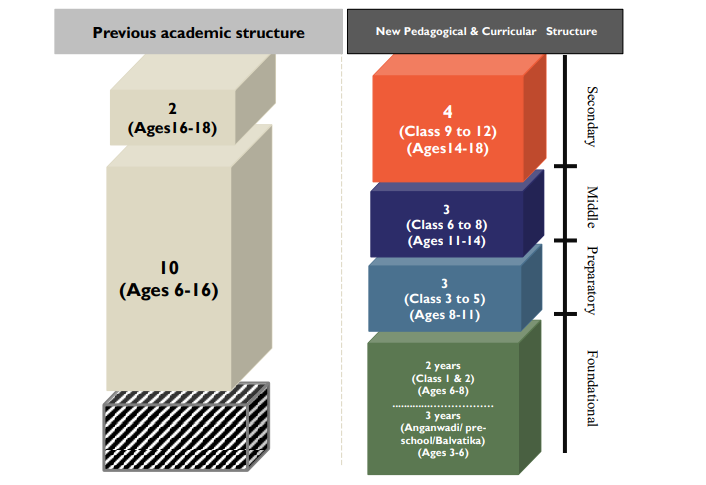
Early Childhood Care and Education (ECCE)
- It consists of play-based and activity-based learning comprising of alphabets, language, puzzles, painting, and music for children in the early years of their life.
- ECCE for children in the age group of 3-6 will be incorporated in the school structure by following the 5+3+3+4 design of the school curriculum.
|
Medium of instruction
- The medium of instruction should be in the local language/mother tongue of the child at least till grade five, and preferably till grade eight.
- The current three-language formula will continue to be implemented.
- At least two of the three languages should be native to India.
- No language should be imposed on any state.
- The state governments should adopt and implement the study of:
- Hindi, English and a modern Indian language (preferably a southern language) in the Hindi-speaking states.
- Hindi, English and the regional language in the non-Hindi speaking states.
Achieving Foundational Literacy and Numeracy
- Every student should attain foundational literacy and numeracy by grade three.
- To achieve this goal, a National Mission on Foundational Literacy and Numeracy will be setup under the MHRD.
- All state governments must prepare implementation plans to achieve these goals by 2025.
|
Reforms in School Teaching and Learning
- Curriculum load in each subject should be reduced to its essential core content to allow for:
- Critical thinking
- Discussion
- Analysis-based learning.
- Students will have increased flexibility and choice of subjects.
- There will be no rigid separations between:
- Arts and sciences
- Curricular and extracurricular activities
- Vocational and academic streams
- Vocational education will start in schools from the 6th grade and include internships.
Teacher Training and Management
- The existing B.Ed. programme for teacher training will be replaced by a four-year integrated B.Ed. programme.
- A national curriculum framework for teacher education will be formulated by the National Council for Teacher Education (NCTE) in consultation with NCERT.
Assessment and Accreditation
- A new body called Performance Assessment, Review, and Analysis of Knowledge for Holistic Development (PARAKH) will be established for setting educational standards.
- An independent State School Standards Authority should be set up in each state.
- It will prescribe basic uniform standards for public and private schools.
- A self-regulation or accreditation system will be instituted for schools.
Higher Education
Holistic Multidisciplinary Education
- It aims for flexible, multi-disciplinary undergraduate education with creative subject combinations, vocational integration, and various certification points.
- The curricula of all higher education institutions (HEIs) should be made multidisciplinary to integrate humanities and arts with science, technology, engineering, and mathematics.
- The undergraduate degree will be made more flexible with multiple exit options with appropriate certification. For example:
- Students will receive a certificate after one year.
- Diploma after two years.
- Bachelor’s degree after three years.
- Bachelor’s with research degree after four years.
- Academic Bank of Credit will be created to store digital academic credits from various educational institutions.
Improving Research
- A National Research Foundation will be established to promote research culture and capacity in higher education.
|
Increasing Gross Enrolment Ratio (GER)
- The NEP aims to increase the GER in higher education to 50% by 2035 (GER was 26.3% in 2018).
- Institutions will have the option to run open distance learning and online programmes to improve access to higher education.
Restructuring of Institutions
- All higher education institutions (HEIs) will be restructured into three categories:
- Research universities focusing equally on research and teaching.
- Teaching universities focusing primarily on teaching.
- Degree-granting colleges primarily focused on undergraduate teaching.
- All HEIs should eventually be transformed into large multidisciplinary universities and colleges.
- By 2030, there should be one multidisciplinary HEI in, or near every district.
Vocational Education
- Vocational education will be integrated in all school and higher education institutions in a phased manner over the next 10 years.
- A national committee for the integration of vocational education will be set up under the MoE for this purpose.
- The NEP aims to ensure that at least 50% of learners in school and higher education should be exposed to vocational education by 2025.
|
Foreign Universities
- High-performing Indian universities will be encouraged to set up campuses in other countries.
- Similarly, selected top global universities will be permitted to operate in India.
Technology in education
- The National Educational Technology Forum (NETF) will be formed to promote the exchange of ideas on using technology.
Promotion of Indian languages
- NEP suggests creating:
- Indian Institute of Translation and Interpretation (IITI).
- National Institutes for Pali, Persian, and Prakrit.
- Improving Sanskrit and other language departments in higher education institutions.
Challenges
- Enormity and diversity: India’s vast and diverse education sector faces significant implementation challenges.
- Capacity limitation: The education ministries and regulatory bodies lack the capacity to manage the extensive changes proposed in the NEP.
- Teaching in the mother tongue may pose difficulties: Adapting curriculum materials to the mother tongue is challenging in India due to its diverse linguistic landscape with 22 official languages and many dialects.
- Digital divide: Its focus on digital learning may overlook the digital divide in India.
{GS2 – MoPA – e-Gov – 2023/09/14} NeVA
- Context (TH | PIB): President Murmu launched the National e-Vidhan Application (NeVA) for Gujarat state legislature.
National e-Vidhan Application (NeVA)
- It is a centralized platform for all legislatures whose purpose is to digitize the functioning of state legislatures in India.
- NeVA is part of the Digital India Programme.
- It aims to:
- Make the functioning of all the State Legislatures digital and paperless.
- Assist the Members of the States/UTs Legislatures in using the latest ICT tools.
|
Objectives
- Computerization of all the branches of the States/UTs Legislature
- Efficient delivery of services
- Empowering citizens for e-democracy
- Capacity Building and Orientation Programme
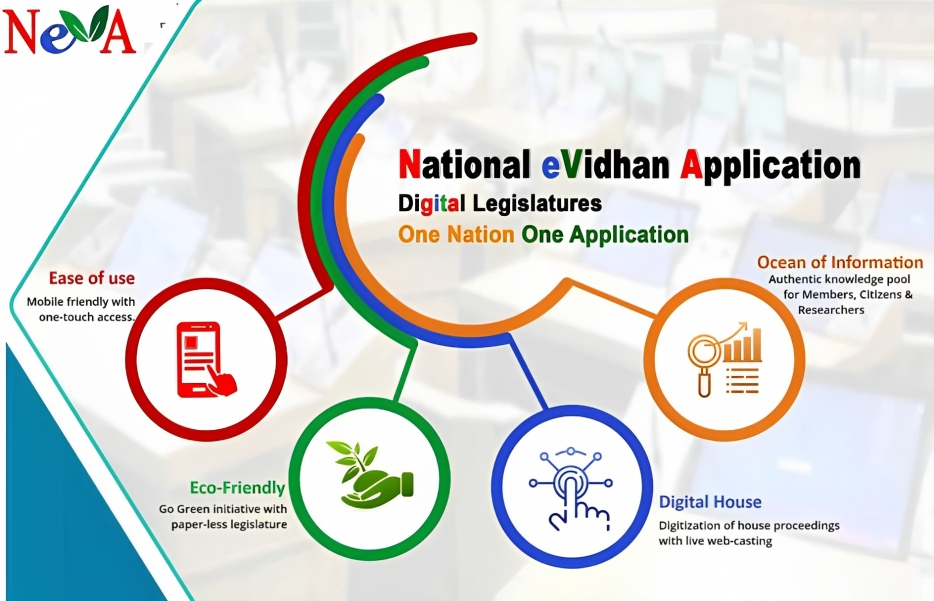
Services Available Through NeVA
- It offers various services for different users, such as:
- List of Business
- Bills for Introduction, Consideration and Passing
- Committee Reports
- Questions and Answers
- Synopsis of Proceedings
- Digital Library
- Notices
Users of NeVA
- The following stakeholders can use the application for different purposes:
- The Members of the Houses across the country
- The Ministers of the concerned Government Ministries/Departments
- The Assembly/House Secretariat Staff
- The Government department staff
- The reporters/media
- The citizens/public at large for accessing information, etc.

Present Status
- Till now, twenty-one State legislatures have signed a MoU for the implementation of the NeVA and the project has been sanctioned by Nineteen Legislatures.
{GS2 – MoEFCC – Initiatives – 2023/09/14} Air Quality Index (AQI)
- Context (LM | PIB): Delhi witnessed its first good air quality of 2023 with an AQI of 45 according to the Central Pollution Control Board (CPCB).
- Air Quality Index (AQI) is a number, which is a measure of air quality.
- AQI value ranges from 0 to 500. The higher the AQI, the worse the air.
- National AQI was launched in India in 2014 by the Ministry of Environment, Forests and Climate Change (MoEFCC) as part of the Swachh Bharat campaign.
- Objective: to help simplify the common understanding of air pollution.
- The AQI scheme was recommended by IIT Kanpur and an Expert Group.
- AQI considers eight pollutants for which 24-hour average National Ambient Air Quality Standards (NAAQS) are prescribed. The pollutants are:
- Particulate Matter (PM10),
- Particulate Matter (PM2.5)
- Nitrogen Dioxide (NO2)
- Sulphur Dioxide (SO2)
- Carbon Monoxide (CO)
- Ozone (O3)
- Ammonia (NH3)
- Lead (Pb)
- There are six categories of AQI: Good, Satisfactory, Moderately Polluted, Poor, Very Poor, and Severe.
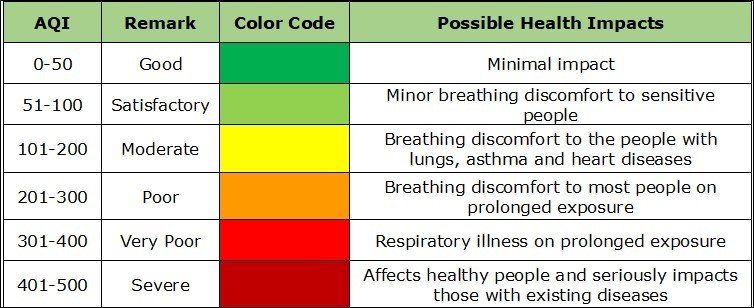
Source: Air Pollution in India – Crucial Aspects | Environics Trust (environicsindia.in)
National Ambient Air Quality Standards (NAAQS)
|
||||||||||||||||
Central Pollution Control Board (CPCB)
|
||||||||||||||||
Graded Response Action Plan (GRAP)
- GRAP is a set of emergency measures that are taken to prevent further deterioration of air quality after AQI of Delhi-NCR region reaches a certain threshold.
- It was approved by the Supreme Court in 2016 in its verdict on M. C. Mehta vs. Union of India.
- Following it, GRAP has been notified by MoEFCC in 2017.
- Implementing agency: Initially, GRAP was implemented by the Environment Pollution (Prevention and Control) Authority (now dissolved).
- From 2021 onwards, the GRAP is being implemented by the Commission for Air Quality Management in NCR & Adjoining Areas (CAQM).
- GRAP is incremental in nature and thus, when the air quality dips from ‘poor’ to ‘very poor,’ measures listed under both sections must be followed.
- CAQM relies on air quality and meteorological forecasts by the Indian Institute of Tropical Meteorology (IITM) and the India Meteorological Department (IMD).
New Revised GRAP
- CAQM has revised GRAP to strengthen measures to combat the deterioration of AQI in winter months.
- It will come into force on 1st October 2023 in the entire NCR.
|
Revised GRAP |
||
|
Stage of Air Quality |
AQI |
Actions |
| Stage I – Poor | 201-300 |
|
| Stage II – Very Poor | 301-400 |
|
| Stage III – Severe | 401-450 |
|
| Stage IV – Severe + | > 450 |
|
{GS2 – MoPNG – 2023/09/14} Pradhan Mantri Ujjwala Yojana (PMUY)
- Context (PIB I IE): Union Cabinet has approved the extension of Pradhan Mantri Ujjwala Yojana.
- The Pradhan Mantri Ujjwala Yojana (PMUY) is a government scheme launched in 2016.
- The scheme was introduced by the Ministry of Petroleum and Natural Gas (MOPNG).
- Objective: Making clean cooking fuel such as LPG available to rural and deprived households.
Ujjawala 2.0
- As per Ujjawala 2.0, the first refill and stove will also be provided free of cost to Ujjwala beneficiaries.
- Targeted subsidy of Rs.200 per 14.2 kg LPG cylinder for up to 12 refills per year is being provided.
- Per capita consumption of PMUY beneficiaries of LPG Cylinders has increased.
Eligibility Criteria to Avail of Connection Under Ujjwala 2.0
- Applicant (woman only) must have attained 18 years of age.
- There should not be any other LPG connection in the same household.
- Adult women belonging to any of the following categories –
- Scheduled Castes and Scheduled Tribes.
- Pradhan Mantri Awas Yojana (Gramin),
- Most Backward Classes (MBC),
- Antyodaya Anna Yojana (AAY),
- Tea and Ex-Tea Garden tribes, Forest Dwellers,
- People residing in Islands and River Islands, are enlisted under SECC Households (AHL TIN)
- Any Poor Household as per the 14-point declaration.
14-Point Declaration in the Pradhan Mantri Ujjwala Yojana (PMUY)
|
Women’s Ease of Living Through Clean Cooking
- According to the World Health Organization (WHO), approximately one-third of the global population, relies on open fires or inefficient stoves fuelled by kerosene, biomass (such as wood, animal dung, and crop waste), and coal for cooking.
- This leads to harmful household air pollution, contributing to an estimated 3.2 million deaths annually in 2020, with over 237,000 deaths being children under the age of 5.
- Non-renewable wood fuels for cooking cause a gigaton of CO2 emissions, and burning residential solid fuels comprise 58 percent of black carbon emissions.
- Research also indicates that this is a gender problem: girls and women face increased exposure to solid fuels. Cooking with solid fuels delays progress towards five of the UN Sustainable
- The PMUY scheme has empowered women economically and socially.
- With easier access to LPG, women are no longer burdened with the task of collecting firewood or other traditional fuels, which often require long and laborious journeys.
- This newfound convenience allows them to participate more actively in community life and take up other income-generating opportunities.
Initiatives to Expand LPG Coverage
- PAHAL (Pratyaksh Hastantarit Labh): Instead of providing LPG cylinders at a subsidized price, those were sold at market price, and the applicable subsidy was directly transferred to the individual’s bank account electronically.
- This reduced “ghost” accounts and illegal use of household cylinders for commercial purposes, ensuring that only the intended beneficiaries receive the benefits.
- GIVE IT UP: Instead of removing subsidies forcefully, people were encouraged to voluntarily surrender their subsidies.
- Through extensive promotion, millions of people willingly gave up the subsidies, which helped redirect the funds to those who genuinely needed assistance in acquiring LPG cylinders.
{GS2 – Polity – IC – Parliament – 2023/09/14} Session of Parliament
- Context (TH): The agenda of the Special Session of Parliament will be to hold a discussion on Parliament’s 75-year journey.
Provisional Calendar of Sittings
- It is prepared for each Session of LS/RS in coordination with the Ministry of Parliamentary Affairs.
- It specifies the days on which the Government Business and Private Members’ Bills are to be taken up in the House.
Parliamentary Business
List of Business
- It contains the main items of the agenda to be taken up by the house on a day.
- It is generally issued:
- Two days in advance of the sitting date.
- Daily during the session period.
Revised List of Business
- It contains the final agenda.
- It is issued the day before the sitting.
Supplementary List of Business
- It contains any additional items being taken up at short notice.
- It is issued on the same day.
{GS2 – Vulnerable Sections – PwDs – 2023/09/14} Disability Certificate
- Context (TH): The Ministry of Tribal Affairs is pushing its demand to issue permanent disability certificates to sickle-cell disease (SCD) patients.
- Currently, the validity of the certificates for SSD is:
- One year for less than 25% disability.
- Three years for a patient with a minimum of 25% disability.
- The Health Ministry is responsible for determining the criteria and rules for disability certificates.
- The Ministry of Social Justice and Empowerment (MoSJE) issues the certificates.
|
Unique Disability Identity Card (UDID Card)
- It is an initiative by GoI to create a National Database for Persons with Disabilities (PwDs).
- It enables the PwDs to obtain the UDID card to avail of the benefits provided by the Government.
- Any person with a disability certificate (irrespective of percentage of disability) can apply for UDID.
- It recognises 21 types of disabilities as mentioned in the Rights of Persons with Disabilities (RPwD) Act, 2016.
- The UDID card has two types of validity:
- Permanent UDID card
- Temporary UDID Card
{GS3 – IE – Exports – 2023/09/14} India’s Supply Chain Opportunity
- Context (IE): Announcement at the G20 Leaders’ Summit on the landmark India-Middle East-Europe Economic Corridor (IMEC) has the potential to make India an Asian hub in global supply chains.
- This is significant amid the efforts to cut dependence on China-centric global supply chains.
India and Southeast Asia Viewed as Attractive Supply Chain Hubs
- Global supply chains are moving from China due to a number of factors, including rising wages, supply chain bottlenecks, and investor concerns about tighter regulation of foreign firms.
- India and Southeast Asia are viewed as attractive supply chain hubs due to their cheap wages, fiscal incentives, improved logistics, and sophisticated manufacturing sectors.
Steps Taken by India to Ramp Up its Supply Chain Network
- Signing bilateral trade agreements: This includes the UAE-India Comprehensive Economic Partnership Agreement, which entered into force in May 2022, and the ongoing talks to conclude the full Australia-India free trade agreement (FTA) by the end of 2023.
- Negotiations for a UK-India and EU-India FTA are also in process.
- These agreements will help to reduce trade barriers and make it easier for Indian companies to export their goods and services to these markets.
- Promoting export-oriented foreign direct investment (FDI): The government has taken a number of steps to promote FDI, i.e. tax breaks and other incentives to foreign companies that invest in India.
- Focusing on deep economic integration India’s new trade agreements with Western trading partners go beyond the traditional focus on goods trade and also include provisions on services, investment, and intellectual property.
Way Forward
- India can learn from China’s experience by promoting smart business, investing in domestic technological capabilities, and targeting multinationals in new industrial activities.
- India has a historic opportunity to promote industrialisation in South Asia by upscaling the Make in India Programme into a Make in South Asia Programme, concluding a comprehensive bilateral FTA with Bangladesh, and upgrading the Indo-Sri Lanka FTA.
{GS3 – IE – Securities – 2023/09/14} Nifty
- Context (IE): The NSE Nifty 50 recently managed to cross the 20,000 mark for the first time.
Stock Exchanges
- A stock exchange is an organized market where securities such as shares of stock, bonds, and other financial instruments are bought and sold.
- It serves as a platform for stockbrokers and traders to conduct transactions.
Stock Exchanges in India
- Bombay Stock Exchange (BSE) in Mumbai
- Calcutta Stock Exchange (CSE) in Bengal
- India International Exchange (India INX) in Gift City
- Metropolitan Stock Exchange of India Ltd. (MSE) in Mumbai
- National Stock Exchange of India (NSE) in Mumbai
- National Commodity & Derivatives Exchange Ltd. (NCDEX) in Mumbai
- Multi Commodity Exchange of India Ltd. (MCX) in Mumbai
NSE (National Stock Exchange of India)
- NSE is one of the two principal large stock exchanges in India, located in Mumbai.
- NSE (National Stock Exchange of India) uses the NIFTY 50 index as its primary benchmark.
- The NIFTY 50 index represents the performance of the top 50 large-cap stocks listed on the NSE.
BSE (Bombay Stock Exchange)
- BSE is the other principal large stock exchange in India, situated in Mumbai.
- It is one of the oldest stock exchanges in Asia.
- BSE (Bombay Stock Exchange) uses the S&P BSE Sensex index.
- The Sensex is a benchmark index that tracks the performance of 30 large and well-established companies listed on the BSE.
{GS3 – S&T – Health – 2023/09/14} Monoclonal Antibody for Nipah Virus Infection
- Context (TH | TH): Amidst the rise of Nipah virus (NiV) infection cases in Kerala, the Indian Council of Medical Research (ICMR) is expected to provide monoclonal antibodies for treatment.
- Experts have also suggested investing in disease epidemiology for the sustainable fight against NiV.
|
Monoclonal Antibody
- Monoclonal antibodies (also called moAbs or mAbs) are proteins made in laboratories that act like proteins called antibodies in our bodies.
- Antibodies are parts of our immune system. They seek out the antigens (foreign materials) and stick to them in order to destroy them.
- The word “monoclonal” refers to:
- The antibodies created in the laboratory are clones.
- They are exact copies of one antibody.
Use of Monoclonal Antibody
- Cancer treatment: Monoclonal antibodies can be used to target and kill cancer cells. For e.g., Herceptin is a monoclonal antibody used for breast cancer cells.
- Autoimmune disease treatment: They can be used to suppress the immune system, which helps to treat autoimmune diseases such as rheumatoid arthritis and multiple sclerosis.
- Diagnosis of diseases: They can be used to detect certain diseases, such as HIV and hepatitis C.
- Prevention of diseases: They can be used to prevent the spread of diseases, such as the flu vaccine.
Benefits of Monoclonal Antibody
- High specificity: They are highly specific to their target which makes them more effective.
- Traditional drugs are often less effective because they target multiple cells or molecules.
- Long half-life: Due to their long half-life, they are administered less frequently than traditional drugs.
- It is more convenient for patients and it also reduces the cost of treatment.
- Low toxicity: This means they have fewer side effects than traditional drugs.
- Large scale production: Since they are lab-made, so, they can be produced in large scale.
- Customizable: Monoclonal antibodies can be customized to target specific cells or molecules.
- This makes them a versatile tool that can be used to treat a variety of diseases.
Concerns with Monoclonal Antibody
- Allergic reactions: They can induce serious allergic reactions in patients.
- Infections: This can weaken the immune system, making it more difficult to fight off infections.
- Blood clots: Monoclonal antibodies can increase the risk of blood clots.
- Autoimmune reactions: They can trigger autoimmune reactions, in which the body’s immune system attacks its own cells.
{Prelims – Sci – Bio – Diseases – 2023/09/14} Pirola
- Context (TH | IE): The rise of COVID-19 infections in multiple countries, is driven by a new Coronavirus variant called BA.2.86, which is informally termed as ‘Pirola’.
- Pirola has a higher mutation rate than Omicron (the variant behind devastating deaths in 2021).
Virus Mutation
- It is natural for all viruses to mutate over time and it is particularly common in RNA viruses.
- Once a virus enters the human body, its genetic material (RNA or DNA) enters the cells and starts making copies of itself which can infect the other cells.
- Whenever an error occurs during this copying process, it triggers a mutation.
- Whenever a virus is widely circulating in a population, its chances of mutating increase.
Concerns with Virus Mutation
- Viruses can become more infectious and deadly
- Viruses can become more resistant to the immune system
- Mutation can change the symptoms of the disease the viruses cause
- The existing vaccines may become ineffective to the viruses
COVID-19
Coronavirus
For more information on Coronavirus > Coronavirus, Coronavirus Disease 2019 (COVID-19 or 2019-nCoV) – PMF IAS |
||||||||||||||||
RNA virus
They include influenza viruses, HIV, SARS-CoV-2 (COVID-19), measles virus, and Ebola virus.
|
||||||||||||||||





![PMF IAS Environment for UPSC 2022-23 [paperback] PMF IAS [Nov 30, 2021]…](https://pmfias.b-cdn.net/wp-content/uploads/2024/04/pmfiasenvironmentforupsc2022-23paperbackpmfiasnov302021.jpg)




